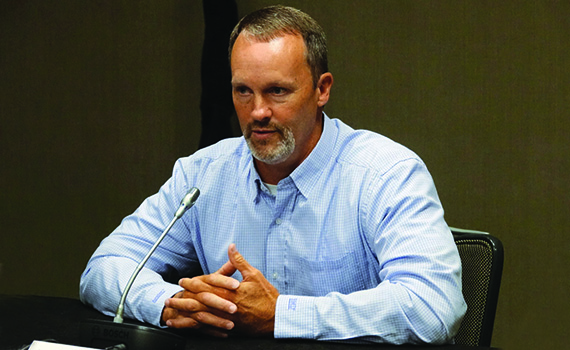Now more than ever, vaccination is critical for managing Salmonella in layer flocks
An interview with Kalen Cookson, DVM, MAM, Director of Clinical Research, Zoetis
Q: With the broad range of products now on the market that claim to help control Salmonella in layer flocks, has the importance of vaccination been diminished?
KC: Not at all. In fact, with increased regulatory pressure on food companies to control Salmonella and other foodborne pathogens, strategic vaccination programs for Salmonella are probably more important than ever. When you consider the economic impact of product recalls and how they can affect a company’s reputation, you quickly realize that Salmonella control is not a place to cut corners.
Progressive layer operations are acutely aware of the importance of vaccinating birds for Salmonella. Furthermore, the Centers for Disease Control issued a report in May 2020 urging more vaccination to control Salmonella in layer flocks after latest figures revealed illnesses linked to certain strains of the pathogen were stalling or in decline,1 which coincides with increased Salmonella vaccination by producers.
It’s not surprising that market research shows that Salmonella vaccine usage continues to increase in the US poultry industry.2
Q: Yes, but in recent years, some alternative products — prebiotics, probiotics and direct-fed microbials, for instance — have shown potential for reducing the incidence of Salmonella in layer flocks. Could these types of products potentially allow producers to reduce vaccination frequency?
KC: Those products work primarily by fostering good intestinal health, which may make birds less susceptible to pathogenic enteric strains of some bacteria, including Salmonella. They help create an environment that makes it more difficult for pathogenic bacteria to flourish, but they are not specific to Salmonella.
For example, we demonstrated in our own research in broilers that BMD® (bacitracin methylene disalicylate) used to control necrotic enteritis (NE) caused by Clostridium perfringens helped improve resistance to Salmonella. In one co-challenge pen study, BMD’s prevention of NE resulted in a significant reduction (p < 0.05) of the Salmonella load on boot swabs and in the prevalence of Salmonella in carcass rinses.3
Keep in mind that Salmonella is a naturally occurring bacterium in poultry. It’s ubiquitous, and there is no silver bullet that provides 100% Salmonella control in live production. Effective control requires a strategic, integrated, holistic approach — one that involves all available tools and management practices. Vaccination is a good place to start.
Q: And why is that?
KC: When it comes to building immunity, there’s no substitute for showing birds a “safe” version of the pathogen they’re expected to contract. Vaccines work by exposing birds to a controlled dose of a live-attenuated or inactivated pathogen, which cannot cause disease but helps to set up an immune response. When vaccinated birds encounter the pathogen in the field, they’re better equipped to fight the infection.
It’s important to remember that while no vaccine can guarantee complete protection against Salmonella or any other organism, they’re invaluable for building strong foundational immunity. If alternative products can help reduce incidence of Salmonella in the gut without interfering with the vaccine — and that is a concern with the contemporaneous administration of some direct-fed microbials — there’s no harm in using them. However, they should be used as supplements or complements, not as replacements for Salmonella vaccination.
Q: We understand how vaccines stimulate natural immunity. But in the case of Salmonella, how do they actually work? Do they stop the pathogen from infecting the flock, reduce colonization or both?
KC: Good question. The thing to keep in mind is that Salmonella are complex bacteria that have evolved to be part of the intestinal flora. It’s therefore challenging to get so-called sterilizing immunity, which effectively means a pathogen can’t infect a host population. That’s not a reasonable expectation.
When we do challenge studies with 20 to 30 birds, we’re giving an artificially high amount of challenge inoculum to every bird — anywhere from a million to a hundred million organisms orally — a worst-case scenario, if you will.
We may not see 100% sterilizing immunity in all organ systems, but we’re still able to measure reductions in colonization rates and loads post-challenge. For example, we might see some organ systems (spleens, reproductive) that are negative at 6 and 12 days post-inoculation (dpi) and others (livers, intestine) that are trending toward negativity by 12 dpi contact.
So, when I see a report from challenge studies with our vaccine, Poulvac® SE, where Salmonella incidence reduction was 60% to 80% but not “sterilizing,” I view that as a success.4
Q: How does that translate to the real world?
KC: Very few farms are under the kind of pressure we use in controlled studies. And the more robust your vaccination program is to guard against Salmonella, the less potential challenge there will be over time. Add in some other, non-specific interactions or interventions — whether it be disinfectants, biosecurity or alternative products — and you can hope to reduce that load even further both in the environment and in the birds.
Q: What could layer operations be doing better to optimize protection against Salmonella?
KC: Zoetis recommends that if you have a live-killed vaccine program, you typically give three live-attenuated vaccines and then one or two inactivated vaccines. But in reality, there are plenty of situations where only two live vaccines are being given. And that usually allows for what I would call gaps or lulls in immunity in a program for wild-type Salmonellas to gain a foothold.
With inactivated vaccines, the human element needs to be considered. How birds are handled affects their stress levels, and correct vaccine application is imperative to ensure an optimal vaccine response. So, a critical part of effective vaccination is having both a good program in place on paper and excellent execution.
Q: How do you know when the vaccines are working?
KC: You can at least measure the killed-vaccine response using serology, which helps determine how effective vaccination crews have been. If, for example, only seven out of 10 birds sampled had the expected seroconversion to the inactivated antigen from a vaccine, we would know there’s room for improvement with vaccination technique. This ability to monitor vaccination crews even when you’re not present at time of application is a very powerful tool. Building accountability into the system can help you get the most out of your vaccination programs.
1 Tack DM, Ray L, Griffin PM, et al. Preliminary Incidence and Trends of Infections with Pathogens Transmitted Commonly Through Food — Foodborne Diseases Active Surveillance Network, 10 U.S. Sites, 2016-2019. MMWR Morb Mortal Wkly Rep. 2020;69:509-514.
2 Rennier Associates Inc., U.S. Broiler-Health Market Tracker, 2018.
3 Data on file, Study Report Nos. 06-16-7AMVG, 02-177AMVG, 03-17-AMVG, Zoetis LLC.
4 Data on file, Study Report No. b-602-98-A2.R, Zoetis LLC. 2017,
All trademarks are the property of Zoetis Services LLC or a related company or a licensor unless otherwise noted.
TOOLBOX, Issue 22
Toolbox is a series of interviews with veterinarians and other technical specialists about their experiences managing antimicrobials, vaccines and other tools for poultry health. It is produced by the editors of Poultry Health Today on behalf of the US Poultry Business of Zoetis.
BIO-00275
October 2020
Posted on November 28, 2020














